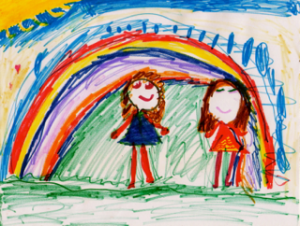After a week in a pine forest on the coast of Argentina, my youngest daughter came back beaming to the big city.
Why?
We’d gone to the beach, walked down sandy lanes in the forest, and she and her brother and sister had raced bikes, climbed trees, and played in the garden as cowboys and Indians, as knights and robbers, and as campers who had to keep warm in the cold out in the wild like something out of a Jack London novel.
For this is the wild for them.
It is the wild far from Buenos Aires, where we live with little green and lots of cement and the roar of buses, trains and rushing cars.
Our life in the city is a rush from breakfast to school, and to work and therapy for our autistic son, followed by art classes, piano lessons, handball and more therapy before dinner and our collapse into bed for a few pages of a book or watching a TV series. Then we fall into dreams agitated by the lists of bills to pay, and of pending play dates, meetings and phone calls.
It’s a fast life and sometimes my wife and I think, screw this. Let’s move back to the coast where we once lived and where life is slower and freer.
But as we drive toward Buenos Aires, our six-year-old daughter radiates in excitement at the return. Her very body exudes energy like a ball of fire.
“The city!” she yells, sitting up in her seat to admire the skyline of tall buildings in Quilmes on the outskirts of Buenos Aires.
“The city!” she says again with as much glee as we drive past La Boca and then Puerto Madero.
I look back to see her sucking it all in with wide eyes, sniffing in the diesel fuels and marveling at the cars and black-and-yellow taxis, and now the buses on 9 de Julio, a main avenue at the heart of the big city.
And then we reach the Obelisk, that tall monument at the very heart of the city, and she can’t hold it anymore.
“My glorious Buenos Aires!”
My wife and I both smile at her exuberance.
Maybe we’re not doing too bad a job living in the big city.





